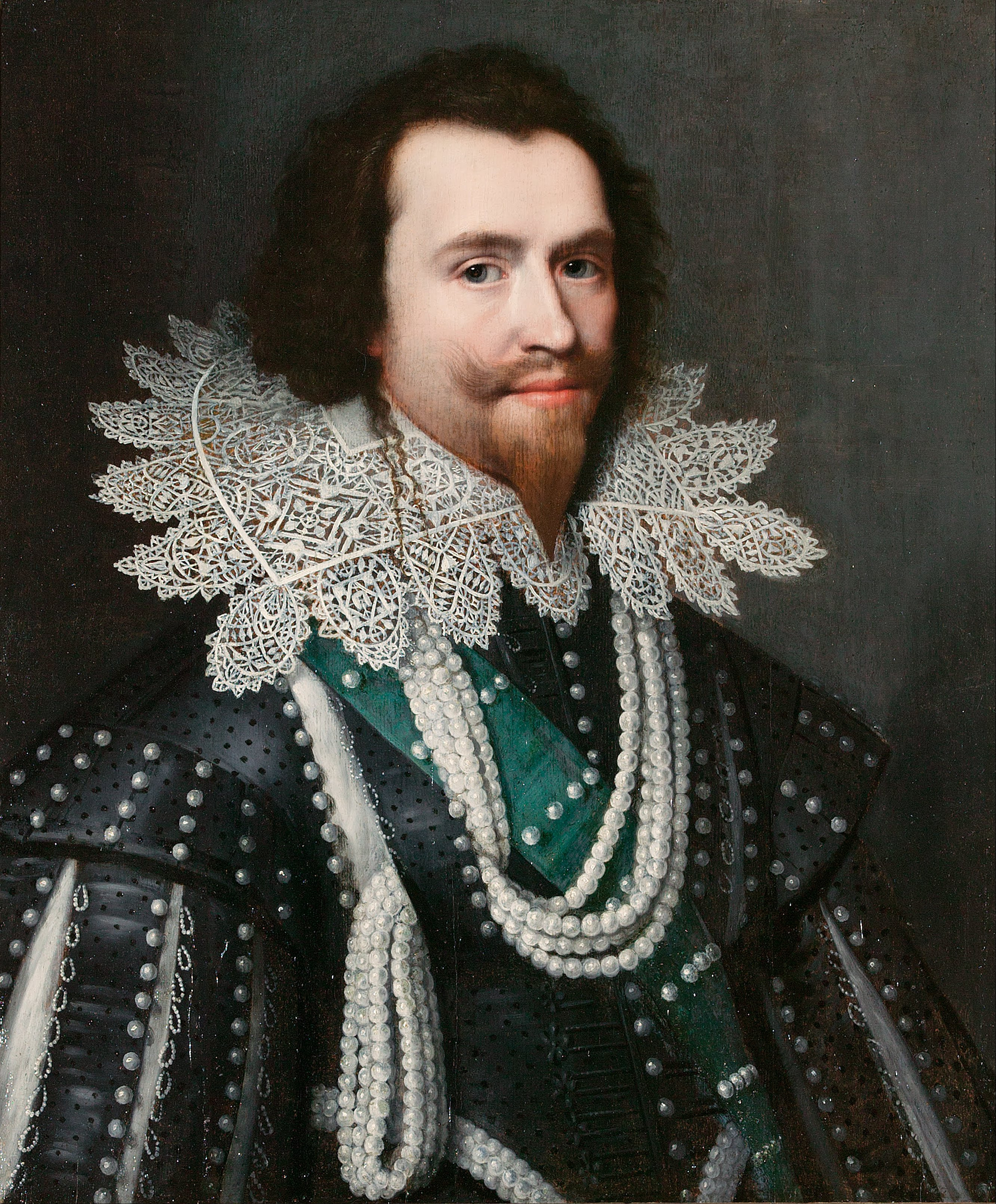 |
| James I |
 |
| George Villiers, Duke of Buckingham |
From The History Vault:
George Villiers enjoyed a meteoric rise to a Dukedom and even succeeded in remaining as a royal favourite when James died in 1625. By this time he was firm friends with Prince Charles although there was never a real suggestion that he shared any sort of sexual relations with him. Villiers and James had always remained close and the Villiers family were very much entwined with the royal family. In fact when Villiers was murdered in 1628 his sons were placed in the royal nursery and brought up with Charles’ own children.
We can never know for sure whether Carr and Villiers shared sexual relations with James but the intensity of the feelings James has for them suggests something more than just friendship. James’ reaction to Carr shunning his bedchamber implies a possessiveness more worthy of a jilted lover than a king to his servant. And what of Villiers letter to James concerning the bed’s head? And finally James’ letter to Villiers where he talks of a marriage and addresses Villiers as his wife? And what of Anna and the seven children? At Carr’s marriage in 1613 a masque was performed, composed by Thomas Campion in which married love between a man and a woman was compared against a male-male relationship:
Some friendship between man and man prefer,
But I th’affection between man and wife.
What good can be in life,
Whereof no fruits appear?
How can man perpetual be
But in his own posterity.
Perhaps James was aware of his posterity hence the children and this might also explain why he allowed his favourites to marry and have children of their own because he believed in the need to ensure their own future. Whatever James was he was a man who craved affection and love but also a king who needed to do his duty and ensure the succession. (Read more.)
More about James I and George Villiers, HERE.
What Buckingham wore to Paris. From The Costume Historian:
When James I died in March 1625 negotiations were already underway for a marriage between Charles and Princess Henrietta Maria of France. The marriage, with the Duc de Chevreuse (Claude de Guise) acting as proxy for Charles, took place at Notre Dame in May 1625. Charles sent Buckingham to Paris to bring the new queen back to England.In the State Papers the report of Buckingham’s clothes is actually described as “a singular specimen of the luxurious magnificence of that great favourite.” It also tells us to a certain extent about the clothes provided to his entourage.“His Grace hath for his body, twenty seven rich suits embroidered and laced with silk and silver plushes; besides one rich white satin uncut velvet suit, set all over, both suit and cloak, with diamonds, the value whereof is thought to be worth fourscore thousand pounds, besides a feather made of great diamonds; with sword, girdle, hatband and spurs with diamonds, which suit his Grace intends to enter Paris with. Another rich suit is of purple satin, embroidered all over with rich orient pearls; the cloak made after the Spanish fashion, with all things suitable, the value whereof will be £20,000 and this is thought shall be for the wedding day in Paris. His other suits are all as rich as invention can frame, or art fashion. His colours [that is for his entourage] for the entrance are white pwatchett, and for the wedding crimson and gold. (Read more.)

















No comments:
Post a Comment